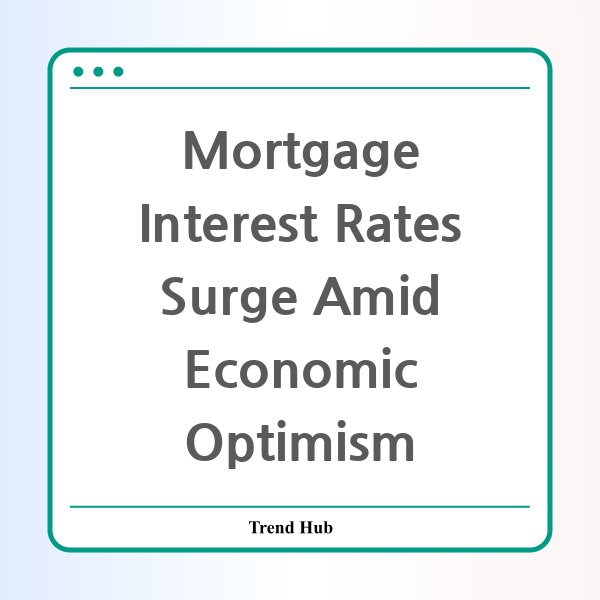* This website participates in the Amazon Affiliate Program and earns from qualifying purchases.

Are you feeling the pressure of rising mortgage interest rates? You’re not alone. Recent economic developments have sent mortgage rates up, affecting homebuyers and homeowners alike. With the average 30-year mortgage rate now at 6.81%, a slight increase from last week, let’s decode what this means for you.
The upward movement in mortgage rates can be attributed to renewed faith in the economy, stemmed from easing trade tensions between the US and China. Wall Street has responded positively, causing an uptick in 10-year Treasury yields, which closely mimic mortgage rates. According to Freddie Mac, the 15-year mortgage rate has also nudged up to 5.92% from 5.89%.
So, what does this mean for prospective homebuyers? Economist Chen Zhao from Redfin stated, “It’s a catch-22 for homebuyers.” If you're looking for a silver lining, you might feel encouraged by the economic optimism, but rising rates complicate the landscape. Mortgage applications for purchasing new homes actually rose by 2% recently, showing that buyers are still active despite the looming increase in interest rates.
For current homeowners contemplating refinancing, this is where things get a bit tricky. While the refinancing landscape can often save you money, current mortgage refinance rates are proving challenging. Average refinance rates have seen some decline, but many experts recommend considering a refinance only if your existing mortgage rate is 1% higher than the current average rate.
This begs the question—when is it the right time to refinance? Here are several considerations:
- Lower Interest Rate: If you can secure a rate at least 1% lower than your existing loan.
- Change Mortgage Type: If you currently hold an adjustable-rate mortgage (ARM) and prefer the stability of a fixed-rate mortgage.
- Eliminate Mortgage Insurance: Consider a refinance to drop mortgage insurance once you hit 20% equity.
- Change Loan Term: Adjust your loan length for better monthly payments—longer terms lower payments, while shorter terms reduce overall interest.
- Accessing Equity: Use a cash-out refinance to tap into the equity of your home for large expenses.
Refinancing isn’t without its costs, and it’s essential to calculate if the potential monthly savings justify the closing costs you’ll incur. A common recommendation is to aim for a 1% reduction in your interest rate to make refinancing a financially sound decision.
Here’s a snapshot of today’s average refinance rates:
| Type of Loan | Current Average Rate |
|---|---|
| 30-Year Fixed | 6.89% |
| 15-Year Fixed | 6.16% |
| 10-Year Fixed | 6.16% |
The mortgage market is highly susceptible to broader economic trends. The Federal Reserve’s current decision to hold interest rates steady suggests that any significant drops in mortgage interest rates might be slow to materialize. While many optimistic forecasts predict a gradual decline in rates toward the end of the year, it's imperative to stay informed and be prepared.
In conclusion, while rising mortgage rates might seem daunting, staying informed about your options—whether buying or refinancing—is critical. The economic landscape is ever-evolving, and your financial decisions should adapt accordingly. Are you ready to make the most of the current mortgage trends? Explore your options today and consult with multiple lenders to secure the best rates.
* This website participates in the Amazon Affiliate Program and earns from qualifying purchases.